Submitted by Pradyut@solver2021 (School Solver User) After the emergence of the Covid-19 pandemic along with many other sectors, the sector of education is dramatically changing. More students are now attracted to the assistance of online tutors. School solver is such a platform that connects tutors with students to help them with their homework, assignments, and projects. School Solver is currently recognized not only as the best tutoring platform in the USA but also of the entire world by a huge portion of students and tutors. It is a platform for many expert tutors with providing them regular staple income. Here is the complete guide if you want to become a School Solver tutor. Requirements to become a School Solver tutor Anyone can register as a School Solver tutor but to provide answers to the questions asked a tutor must pass School Solver Rules and Basic English quizzes. Through this process, the platform makes sure that only dedicated, serious, and qualified persons can become...
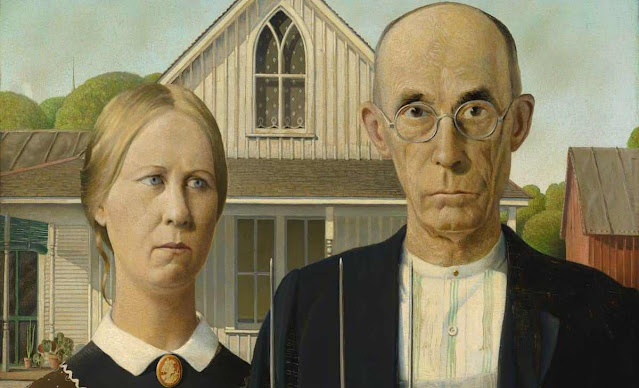
CONTENTS
- Before World War 1
- USA in World War 1
- Roaring Twenties
- Great Depression
- USA in World War 2
- Beginning of Cold War
U.S. History Timeline | Progressive Era before World War 1
1900:- U.S. helps to suppress Boxer Rebellion (1899-1901).
- According to the census, the nation's population numbers nearly 76 million.
1901, March 2: U.S. Steel is formed.
1901, March 4: McKinley's second inauguration.
1901, September 6: McKinley's is shot by anarchist Leon Czolgosz in Buffalo, New York.
1901, September 14: Mr. President dies from his wounds and is succeeded by his vice president, Theodore Roosevelt.
1901, December 5: Birth of Walter Elias Disney.
1902, June 17: Newland Reclamation Act becomes effective.
1902, July 2: Philippine-American war resulted in U.S. occupation of Philippines and dissolution of the First Philippine Republic.
1903:
- Harley Davidson Motor Company is formed.
- Big Stick Diplomacy is announced.
1903, October 23: New Amsterdam Theatre is opened.
1903, November 18: Hay-Bunau-Varilla Treaty established Panama Canal Zone.
1903, December 17: Wright brothers make the first controlled, sustained flight in heavier-than-air aircraft at Kitty Hawk, N.C.
1904: U.S. acquire Panama Canal Zone.
1905: Theory of Relativity is published.
1905, March 4: Theodore Roosevelt's second inauguration.
1905, June 25: Industrial Workers of the World is founded.
1906: Pure Food and Drug Act and Meat Inspection Act becomes first of such similar acts to be enacted.
1906, March 13: Women activist and social reformer Susan B. Anthony dies.
1906, April 18: San Francisco earthquake leaves 500 dead or missing and destroys about 4 square miles of the city.
1907, February 15: Gentalmen’s Agreement is signed between the U.S.A. and Japan with a motive to reduce tension in the pacific.
1908, July 26: Bureau of Investigation (BOI) is formed, which would later be known as Federal Bureau of Investigation (FBI).
1909, February 12: The National Association for the Advancement of Colored People (NAACP) is founded.
1909, March 4: William Howard Taft is inaugurated as the 27th president.
1909, April 6: Robert Edward Peary claims to have reached North Pole.
1910, June 25: Mann Act a.k.a. White Slave Traffic Act is passed.
1911: Supreme Court breaks up Standard Oil, one of the oldest and largest oil company of the time.
1912, April 15: RMS Titanic sinks.
1913, March 4: Woodrow Wilson is inaugurated as the 28th president.
1913, April 8: Seventeenth Amendment to the Constitution is ratified, providing for the direct election of US senators by popular vote rather than by the state legislatures.
1914: Mother's Day in the U.S. is recognized as a national holiday.
1914, July 28: World War I starts.
1914, August 15: Panama Canal opens to traffic.
1914, September 26: Federal Trade Commission is formed.
1915, January 25: First long distance telephone service, between New York and San Francisco, is demonstrated.
1915, May 7: RMS Lusitania, a British ocean liner is sunk by a German U-Boat on the coast of Ireland, killing 1,198 crew and passenger, including U.S. citizens.
1916:
1916, November 7: Jeannette Rankin of Montana is the first woman elected to the U.S. House of Representatives.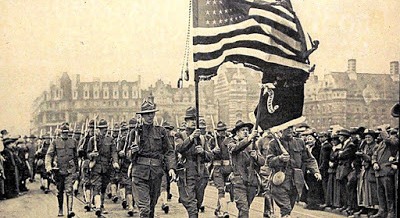
1917, March 5: Wilson's second inauguration.
1917, April 6: U.S. enters World War I, declaring war on Germany, three years after conflict began in 1914.
1917, May 15: First regular Airmail Service begins, with one round trip a day between Washington, D.C., and New York.
1917, November 2: Lansing-Ishii Agreement is signed between Japan and U.S. to control disputes over China.
1917, December 7: U.S. declares war on Austria-Hungary.
1917-1919: "Silent Sentinels" demonstration outside White House gates.
1917-1920: Occurrence of First Red Scare, following October Revolution in Russia.
1918, January 8: President Wilson's delivered speech, outlining the principles of Fourteen Points.
1918, February: Worldwide influenza pandemic Spanish Flu strikes; by 1920, nearly 20 million are dead. In US, 500,000 perish.
1918, November 11: Armistice ending World War I is signed.
1919, January 13: League of Nations meets for the first time; U.S. is not represented.
1919, January 16: Eighteenth Amendment to the Constitution is ratified, prohibiting the manufacture, sale, and transportation of liquor. It is later repealed by the Twenty-First Amendment in 1933.
1919, August 18: Nineteenth Amendment to the Constitution is ratified, granting women the right to vote.
1919, November 19: Treaty of Versailles, outlining terms for peace at the end of World War I, is rejected by the U.S. Senate.
1920, August 20: First radio broadcast by WWJ in Detroit.
1920, March 1: Esch-Cummins Act returned railroads to private operation after World War I.
1921, March 4: Warren G. Harding is inaugurated as the 29th president.
1921, July 2: President signs resolution declaring peace with Austria and Germany.
1921, November 12, - 1922, February 6: Washington Disarmament Conference.
1922: Fordney-Mccumber Tariff is imposed, raising tariff on foreign imports.
1923, March 23: Tennessee passes a law (Butler Act) against the teaching of evolution in public schools. This sets the stage for the Scopes Monkey Trial.
1923, August 2: President Harding dies suddenly. He is succeeded by his vice president, Calvin Coolidge.
1923, October: Teapot Dome scandal breaks, as Senate launches an investigation into improper leasing of naval oil reserves during Harding administration.
1924, May 26: Immigration Act Basic Law is imposed.
1925, January 5: Nellie Taylor Ross becomes the first U.S. women Governor in Wyoming.
1925, March 4: Coolidge's second inauguration.
1925, July 21: Scopes Monkey trial is decided.
1926, June 19: NBC, the first major U.S. broadcast network is founded.
1927, May 20–21: Charles Lindbergh makes the first solo nonstop transatlantic flight in his plane The Spirit of St. Louis.
1927, October 6: The Jazz Singer is released, the first motion picture with sound.
1928, November 18: Disney's Steamboat Willie is released, the first animated picture; featuring Micky Mouse.
1928 August 27: Kellog-Briand Pact is signed by 15 countries in Paris.
1929, February 20: American Samoa officially becomes a U.S. territory.
1929, March 4: Herbert Hoover is inaugurated as the 31st president.
1929, October 24: Stock Market Crash have witnessed "Black Tuesday"; generally accepted as the starting date of the Great Depression.
1930, February: Pluto is discovered.
1930, March 13: Smoot-Hawley Tariff Act is introduced, supporting more protection for domestic economy.
1931, March 3: The Star-Spangled Banner is adopted as the national anthem.
1931, May 1: Empire State Building opens to public.
1931, September 18: Japanese Invasion of Manchuria is started.
1932, January 12: Hattie Wyatt Caraway of Arkansas is the first woman elected to the U.S. Senate, to fill a vacancy caused by the death of her husband. She is reelected in 1938.
1932, February: Reconstruction Finance Corporation was administered.
1932, May 21: Amelia Earhart completes first solo nonstop transatlantic flight by a woman.
1932, July 1: Bureau of Investigation (established 1908) is renamed as Federal Bureau of Investigation.
1932, July 28: Bonus Army Marches on Washington, D.C.
1933, January 23: Twentieth Amendment to the Constitution, sometimes called the “Lame Duck Amendment,” is ratified, moving the president's inauguration date from March 4 to January 20.
1933, March 4: Franklin Roosevelt is inaugurated as the 32nd president.
1933, March 9 – June 16: New Deal recovery measures are enacted by Congress.
1933, December 5: Twenty-First Amendment to the Constitution is ratified, repealing Prohibition.
1934, March 24: Philippine Independence Act is enacted to establish the process for the independence of Philippine within 10 years.
1934, June 18: Indian Reorganization Act is signed into law.
1934, July 22: Gangster John Herbert Dillinger is shot dead.
1935: Federal Bureau of Investigation is created out from former Division of Investigation, combining Bureau of Investigation and Bureau of Prohibition into it under J. Edgar Hoover as the first director.
1935, April 8: Works Progress Administration is established.
1935, July 5: National Labor Relations Act of 1935 is signed into law.
1935, August 14: Social Security Act is passed.
1935, August 30: Revenue Act of 1939 introduced 'Wealth Tax' on higher income levels.
1935, November 9: Congress of Industrial Organizations was formed.
1936: Robinson-Patman Act is enacted, prohibiting anti-competitive practices by manufacturers.
1937, January 20: F. Roosevelt's second inauguration.
1937, May 6: The Hindenburg Disaster marked the end of airship travel.
1937, May 27: Golden Gate Bridge is opened to traffic.
1937, December 12: Panay Incident in China took place, while Japanese attacked U.S. Navy gunboat USS Panay. The gunboat sunk, killing 3 and making 43 wounded.
1938, June: Superhero Superman is introduced.
1938, June 25: Fair Labor Standards Act is passed, setting the first minimum wage in the U.S. at 25 cents per hour.
1939, August 2: Hatch Act is enacted, preventing pernicious political activities.
1939, September 1: World War II begins with Nazi Germany invades Poland.
1939, September 5: U.S. declares its neutrality in European conflict.
1939, September 21: Cash and Carry policy replaced the Neutrality Acts of 1937, providing war belligerents only non military purchase from U.S. on cash.
1940, November 5: Roosevelt wins presidential election for third time.
1941, January 20: F. Roosevelt's third inauguration. He is the first and only president elected to a third term.
1941, March 11: Lend-Lease Bill is signed to supply Great Britain, China, Soviet Union, Free France and Allied Nations necessary war time commodities, including arms and weapons.
1941, June 22: Operation Barbarossa is launched upon Russia by Axis Powers.
1941, August 14: Atlantic Charter is issued.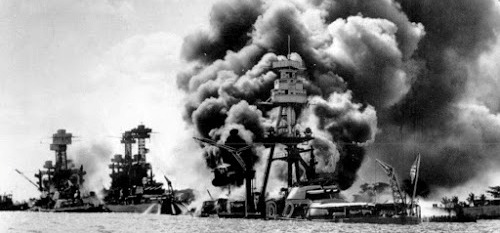
1941, December 8: U.S. declares war on Japan.
1941, December 11: Germany and Italy declare war on the United States; U.S. reciprocates by declaring war on both countries.
1942, January 2: Japan occupied Commonwealth of the Philippines.
1942, February 19: "Internment of Japanese Americans" begins, including relocation and seizure of property.
1942, March: Congress of Racial Equality is founded.
1492, April 18: Doolittle Raid is served as retaliation for the attack on Pearl Harbor.
1492, May 4-8: Battle of Coral Sea.
1942, June 4-7: Battle of Midway is resulted in Japanese loss.
1942, October – December: Allies invade North Africa, known as Operation Torch.
1943, September – December: Allies invade Italy.
1943, November, 22-26: Cairo Conference.
1943, November 28, - 1944, December 1: Tehran Conference is held to make strategy for D-Day.
1944, June 6: Allies invade France on D-Day.
1945, January 20: F. Roosevelt's fourth inauguration.
1945, February 4 – 11: President Roosevelt, Churchill, and Stalin meet at Yalta in the USSR to discuss postwar occupation of Germany.
1945, April 12: President Roosevelt dies of a stroke and is succeeded by his vice president, Harry Truman.
1945, May 7: Germany surrenders unconditionally.
1945, July 16: First atomic bomb is detonated at Alamogordo, New Mexico.
1945, July 17 – August 2: President Truman, Churchill, and Stalin meet at Potsdam, near Berlin, Germany, to demand Japan's unconditional surrender and to discuss plans for postwar Europe.
1945, August 6: U.S. drops atomic bomb on Hiroshima, Japan.
1945, August 9: U.S. drops atomic bomb on Nagasaki, Japan.
1945, August 10-17: Division of Korea is done.
1945, August 14: Japan agrees to unconditional surrender.
1945, September 2: Japanese envoys sign surrender terms aboard the USS Missouri in Tokyo harbor.
1945, October 24: United Nations is established.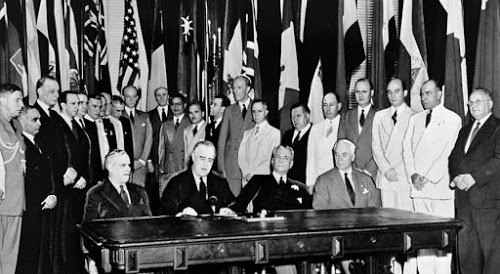
1947, July 18: Presidential Succession Act is signed into law by President Truman.
1948, April 2: Congress passes Foreign Aid Bill including the Marshall Plan, which provides aid for European postwar recovery.
1948, April 30: Organization of American States is established.
1948, June 24: Soviets begins blockade of Berlin in the first major crisis of the cold war.
1948, June 26: In response to Soviet blockade, U.S. and Great Britain begin airlift of food and fuel to West Berlin.
1949, January 20: Truman's second inauguration.
1949, April 4: North Atlantic Treaty Organization (NATO) is established.
1949, May 12: Soviets end blockade of Berlin but airlift continues until September 30.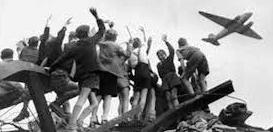
1913, April 8: Seventeenth Amendment to the Constitution is ratified, providing for the direct election of US senators by popular vote rather than by the state legislatures.
1914: Mother's Day in the U.S. is recognized as a national holiday.
1914, July 28: World War I starts.
1914, August 15: Panama Canal opens to traffic.
1914, September 26: Federal Trade Commission is formed.
1915, January 25: First long distance telephone service, between New York and San Francisco, is demonstrated.
1915, May 7: RMS Lusitania, a British ocean liner is sunk by a German U-Boat on the coast of Ireland, killing 1,198 crew and passenger, including U.S. citizens.
1916:
- U.S. agree to purchase Danish West Indies (Virgin Islands) for $25 million.
- Adamson Railway Labor Act is enacted.
1916, November 7: Jeannette Rankin of Montana is the first woman elected to the U.S. House of Representatives.

US History Timeline | USA in World War 1
1917, March 3: Zimmermann Telegram is admitted genuine to the public.1917, March 5: Wilson's second inauguration.
1917, April 6: U.S. enters World War I, declaring war on Germany, three years after conflict began in 1914.
1917, May 15: First regular Airmail Service begins, with one round trip a day between Washington, D.C., and New York.
1917, November 2: Lansing-Ishii Agreement is signed between Japan and U.S. to control disputes over China.
1917, December 7: U.S. declares war on Austria-Hungary.
1917-1919: "Silent Sentinels" demonstration outside White House gates.
1917-1920: Occurrence of First Red Scare, following October Revolution in Russia.
1918, January 8: President Wilson's delivered speech, outlining the principles of Fourteen Points.
1918, February: Worldwide influenza pandemic Spanish Flu strikes; by 1920, nearly 20 million are dead. In US, 500,000 perish.
1918, November 11: Armistice ending World War I is signed.
1919, January 13: League of Nations meets for the first time; U.S. is not represented.
1919, January 16: Eighteenth Amendment to the Constitution is ratified, prohibiting the manufacture, sale, and transportation of liquor. It is later repealed by the Twenty-First Amendment in 1933.
1919, August 18: Nineteenth Amendment to the Constitution is ratified, granting women the right to vote.
1919, November 19: Treaty of Versailles, outlining terms for peace at the end of World War I, is rejected by the U.S. Senate.
US History Timeline | Roaring Twenties
1920: Depression of 1920-1921 begins.1920, August 20: First radio broadcast by WWJ in Detroit.
1920, March 1: Esch-Cummins Act returned railroads to private operation after World War I.
1921, March 4: Warren G. Harding is inaugurated as the 29th president.
1921, July 2: President signs resolution declaring peace with Austria and Germany.
1921, November 12, - 1922, February 6: Washington Disarmament Conference.
1922: Fordney-Mccumber Tariff is imposed, raising tariff on foreign imports.
1923, March 23: Tennessee passes a law (Butler Act) against the teaching of evolution in public schools. This sets the stage for the Scopes Monkey Trial.
1923, August 2: President Harding dies suddenly. He is succeeded by his vice president, Calvin Coolidge.
1923, October: Teapot Dome scandal breaks, as Senate launches an investigation into improper leasing of naval oil reserves during Harding administration.
1924, May 26: Immigration Act Basic Law is imposed.
1925, January 5: Nellie Taylor Ross becomes the first U.S. women Governor in Wyoming.
1925, March 4: Coolidge's second inauguration.
1925, July 21: Scopes Monkey trial is decided.
1926, June 19: NBC, the first major U.S. broadcast network is founded.
1927, May 20–21: Charles Lindbergh makes the first solo nonstop transatlantic flight in his plane The Spirit of St. Louis.
1927, October 6: The Jazz Singer is released, the first motion picture with sound.
1928, November 18: Disney's Steamboat Willie is released, the first animated picture; featuring Micky Mouse.
1928 August 27: Kellog-Briand Pact is signed by 15 countries in Paris.
1929, February 20: American Samoa officially becomes a U.S. territory.
1929, March 4: Herbert Hoover is inaugurated as the 31st president.

US History Timeline | Great Depression
1929, September 4 - November 13: Wall Street Crash precipitates the Great Depression.1929, October 24: Stock Market Crash have witnessed "Black Tuesday"; generally accepted as the starting date of the Great Depression.
1930, February: Pluto is discovered.
1930, March 13: Smoot-Hawley Tariff Act is introduced, supporting more protection for domestic economy.
1931, March 3: The Star-Spangled Banner is adopted as the national anthem.
1931, May 1: Empire State Building opens to public.
1931, September 18: Japanese Invasion of Manchuria is started.
1932, January 12: Hattie Wyatt Caraway of Arkansas is the first woman elected to the U.S. Senate, to fill a vacancy caused by the death of her husband. She is reelected in 1938.
1932, February: Reconstruction Finance Corporation was administered.
1932, May 21: Amelia Earhart completes first solo nonstop transatlantic flight by a woman.
1932, July 1: Bureau of Investigation (established 1908) is renamed as Federal Bureau of Investigation.
1932, July 28: Bonus Army Marches on Washington, D.C.
1933, January 23: Twentieth Amendment to the Constitution, sometimes called the “Lame Duck Amendment,” is ratified, moving the president's inauguration date from March 4 to January 20.
1933, March 4: Franklin Roosevelt is inaugurated as the 32nd president.
1933, March 9 – June 16: New Deal recovery measures are enacted by Congress.
1933, December 5: Twenty-First Amendment to the Constitution is ratified, repealing Prohibition.
1934, March 24: Philippine Independence Act is enacted to establish the process for the independence of Philippine within 10 years.
1934, June 18: Indian Reorganization Act is signed into law.
1934, July 22: Gangster John Herbert Dillinger is shot dead.
1935: Federal Bureau of Investigation is created out from former Division of Investigation, combining Bureau of Investigation and Bureau of Prohibition into it under J. Edgar Hoover as the first director.
1935, April 8: Works Progress Administration is established.
1935, July 5: National Labor Relations Act of 1935 is signed into law.
1935, August 14: Social Security Act is passed.
1935, August 30: Revenue Act of 1939 introduced 'Wealth Tax' on higher income levels.
1935, November 9: Congress of Industrial Organizations was formed.
1936: Robinson-Patman Act is enacted, prohibiting anti-competitive practices by manufacturers.
1937, January 20: F. Roosevelt's second inauguration.
1937, May 6: The Hindenburg Disaster marked the end of airship travel.
1937, May 27: Golden Gate Bridge is opened to traffic.
1937, December 12: Panay Incident in China took place, while Japanese attacked U.S. Navy gunboat USS Panay. The gunboat sunk, killing 3 and making 43 wounded.
1938, June: Superhero Superman is introduced.
1938, June 25: Fair Labor Standards Act is passed, setting the first minimum wage in the U.S. at 25 cents per hour.
1939, August 2: Hatch Act is enacted, preventing pernicious political activities.
1939, September 1: World War II begins with Nazi Germany invades Poland.
1939, September 5: U.S. declares its neutrality in European conflict.
1939, September 21: Cash and Carry policy replaced the Neutrality Acts of 1937, providing war belligerents only non military purchase from U.S. on cash.
1940, November 5: Roosevelt wins presidential election for third time.
1941, January 20: F. Roosevelt's third inauguration. He is the first and only president elected to a third term.
1941, March 11: Lend-Lease Bill is signed to supply Great Britain, China, Soviet Union, Free France and Allied Nations necessary war time commodities, including arms and weapons.
1941, June 22: Operation Barbarossa is launched upon Russia by Axis Powers.
1941, August 14: Atlantic Charter is issued.

US History Timeline | USA in World War 2
1941, December 7: Japanese attacks on Hawaii, Guam, and the Philippines are inaugurated with the Attack on Pearl Harbor.1941, December 8: U.S. declares war on Japan.
1941, December 11: Germany and Italy declare war on the United States; U.S. reciprocates by declaring war on both countries.
1942, January 2: Japan occupied Commonwealth of the Philippines.
1942, February 19: "Internment of Japanese Americans" begins, including relocation and seizure of property.
1942, March: Congress of Racial Equality is founded.
1492, April 18: Doolittle Raid is served as retaliation for the attack on Pearl Harbor.
1492, May 4-8: Battle of Coral Sea.
1942, June 4-7: Battle of Midway is resulted in Japanese loss.
1942, October – December: Allies invade North Africa, known as Operation Torch.
1943, September – December: Allies invade Italy.
1943, November, 22-26: Cairo Conference.
1943, November 28, - 1944, December 1: Tehran Conference is held to make strategy for D-Day.
1944, June 6: Allies invade France on D-Day.
1945, January 20: F. Roosevelt's fourth inauguration.
1945, February 4 – 11: President Roosevelt, Churchill, and Stalin meet at Yalta in the USSR to discuss postwar occupation of Germany.
1945, April 12: President Roosevelt dies of a stroke and is succeeded by his vice president, Harry Truman.
1945, May 7: Germany surrenders unconditionally.
1945, July 16: First atomic bomb is detonated at Alamogordo, New Mexico.
1945, July 17 – August 2: President Truman, Churchill, and Stalin meet at Potsdam, near Berlin, Germany, to demand Japan's unconditional surrender and to discuss plans for postwar Europe.
1945, August 6: U.S. drops atomic bomb on Hiroshima, Japan.
1945, August 9: U.S. drops atomic bomb on Nagasaki, Japan.
1945, August 10-17: Division of Korea is done.
1945, August 14: Japan agrees to unconditional surrender.
1945, September 2: Japanese envoys sign surrender terms aboard the USS Missouri in Tokyo harbor.
1945, October 24: United Nations is established.

US History Timeline | Beginning of Cold War
1946, July 4: The Philippines, which had been ceded to the U.S. by Spain at the end of the Spanish-American War, becomes an independent republic.1947, July 18: Presidential Succession Act is signed into law by President Truman.
1948, April 2: Congress passes Foreign Aid Bill including the Marshall Plan, which provides aid for European postwar recovery.
1948, April 30: Organization of American States is established.
1948, June 24: Soviets begins blockade of Berlin in the first major crisis of the cold war.
1948, June 26: In response to Soviet blockade, U.S. and Great Britain begin airlift of food and fuel to West Berlin.
1949, January 20: Truman's second inauguration.
1949, April 4: North Atlantic Treaty Organization (NATO) is established.
1949, May 12: Soviets end blockade of Berlin but airlift continues until September 30.

ALSO CLICK:-
U.S. History Timeline: Earliest Period to 1607
U.S. History Timeline: Colonial America (1607–1764)
U.S. History Timeline: American Revolution and Aftermath (1765–1799)
U.S. History Timeline: Emergence of a New Nation (1800–1849)
U.S. History Timeline: American Civil War and Reconstruction (1850-1899)
U.S. History Timeline: Colonial America (1607–1764)
U.S. History Timeline: American Revolution and Aftermath (1765–1799)
U.S. History Timeline: Emergence of a New Nation (1800–1849)
U.S. History Timeline: American Civil War and Reconstruction (1850-1899)
U.S. History Timeline: Progressive Era and World Wars
U.S. History Timeline: 1950-1974
U.S. History Timeline: 1974-1999
U.S. History Timeline: 2000-2016
U.S. History Timeline: 2017-2020
Comments
Post a Comment